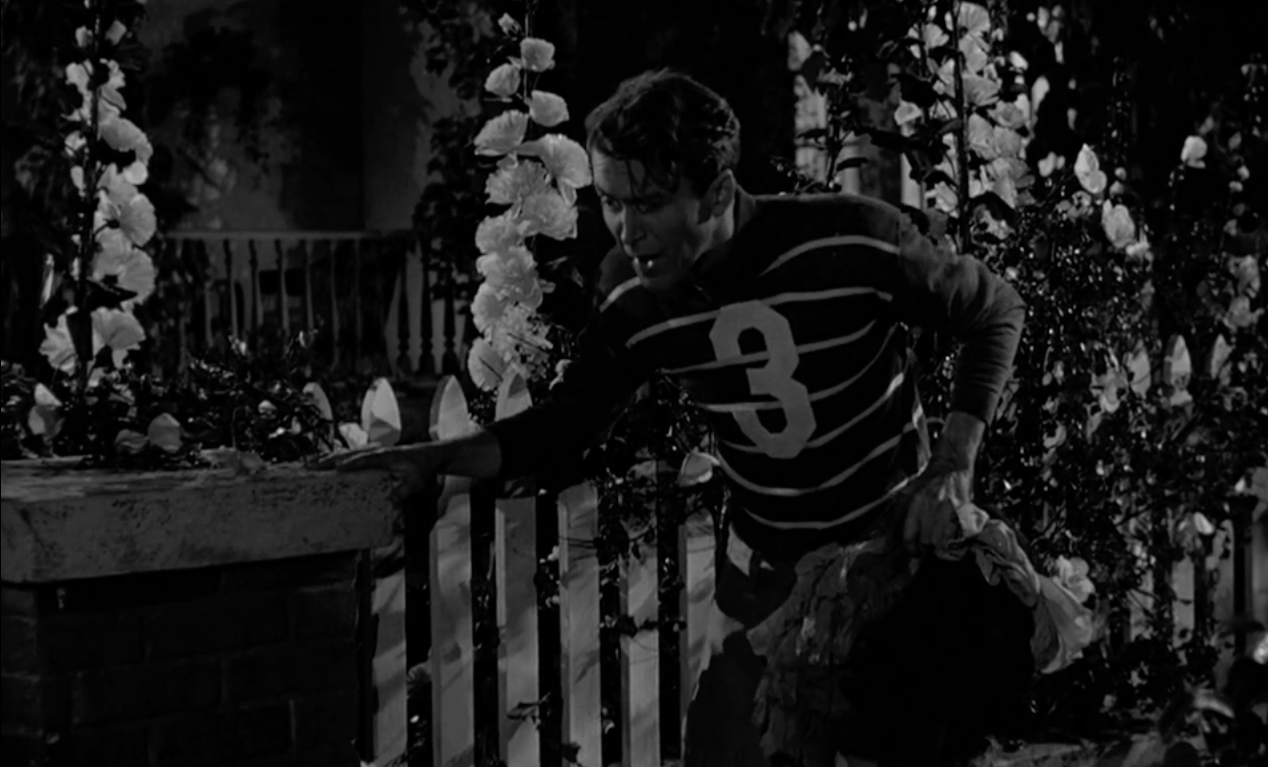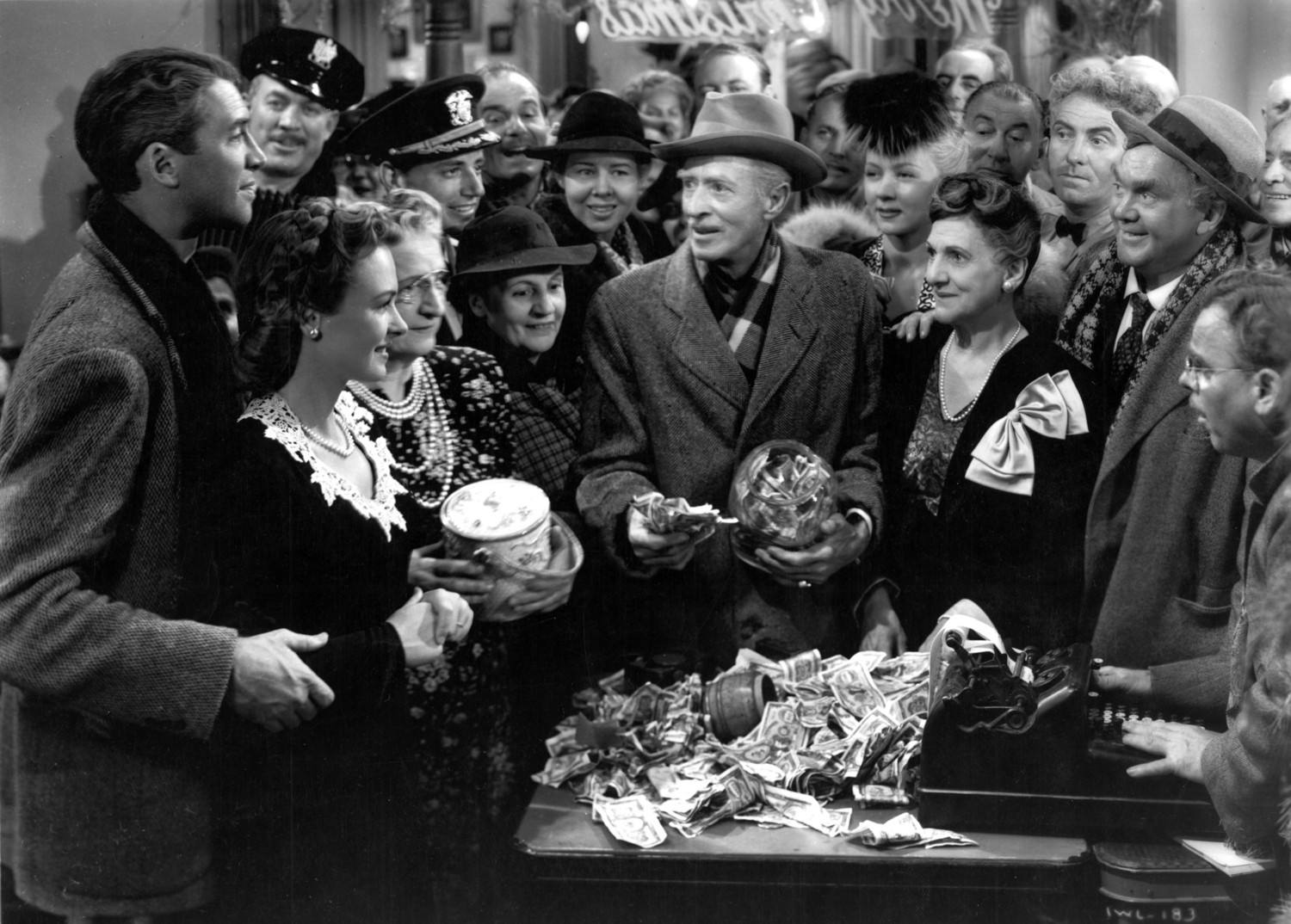How did “It’s a Wonderful Life” go from a flop to a holiday classic?
Upon release of It’s a Wonderful Life in 1946, Bosley Crowther wrote for The New York Times, “the weakness of this picture, from this reviewer’s point of view, is the sentimentality of it—its illusory concept of life. Mr. Capra’s nice people are charming, his small town is a quite beguiling place and his pattern for solving problems is most optimistic and facile. But somehow they all resemble theatrical attitudes rather than average realities.”
In short, he felt the film was too sweet and phony, heavily suggestive of a town atmosphere where human kindness and kinship operated on a saccharine level beyond the realm of reality. Audiences and other critics apparently felt the same, as the film failed to perform at the box office, ultimately losing over a half-million dollars. (The FBI even publicly called the film communist propaganda, on the basis that the representation of people with money as cruel villains was a direct attempt to malign the upper class.)
Today, this opinion is flipped. It’s a Wonderful Life has become one of the few successfully sentimental movies of the holiday season. It is the ultimate, iconic Christmas film, hitting the elusive sweet spot of holiday themes. It is almost shamelessly sentimental, yet its spirit feels genuine and earned without being off-putting. So what turned this formerly unsuccessful film into a popular, timeless classic?
As Roger Ebert is quick to note in his Great Movies entry on the film, copyright (or, the lack thereof) played a big role in revitalizing the film’s public appeal. In 1974, a filing error caused the film to fall out of copyright and allowed television stations anywhere to show the film, for free, on their networks. PBS spearheaded the opportunity and began running the film on their stations across America, noticing its popularity climb with each year. This was the major push that, almost thirty years after the film was made, finally brought it out of the shadows and transformed it into a ritualistic part of the holidays for millions of families. (It also led to colorizations and garish debasements of the film, which Ebert adamantly cites as the worst consequence of it falling from copyright.) Beyond that, it is a well-balanced holiday film that hits all the right notes at the right times.
It’s a Wonderful Life is, quite frequently, a genre-bending film. It is certainly a drama, has elements of fantasy, and is frequently funny. It starts with plenty of lighthearted comedy, like the swimming pool at the hop which quickly swallows dancing students, followed by the hilarious scene where Donna Reed’s Mary character ends up naked in a bush, with Jimmy Stewart’s George Bailey concocting schemes about how to best exploit the situation in his favor.

But then it transitions to romance, as Stewart and Reed’s faces nearly melt into one another as they share a telephone call. And of course, there is the earlier drama of Bailey saving his little brother from death, along with plenty of later drama around Bailey Building & Loan. But what really makes It’s a Wonderful Life so timeless is the relevance of its story. The film may be almost 70 years old, but the idea of someone whose life hasn’t turned out the way they dreamed is applicable to the majority of people. Very few of us have become the astronauts, pro baseball players, or bestselling writers we imagined being in our youth. Reality has a funny way of changing our plans, getting in the way, and forcing us to adapt to the necessities of life—especially when we perceive those around us as better off. George Bailey is cinema’s shining example of compromise, of life getting in the way of ambition, and of how to grow an appreciation for the value of every day. His brother is a war hero, his friends are wealthy and renowned, and he is stuck managing the family business for which he has no passion. It’s a Wonderful Life encourages the viewer to become George Bailey, and to take stock of the things in our lives that are wonderful in their simplicity. Wealth and renown are trivial to the wonders of family, friends, and health, and on that criteria, George Bailey is “the richest man in town.” It is an extremely simple film and its message is nearly universal. The reason its sentimental messages feel so earned is because most viewers can put themselves in Bailey’s shoes at one point of another—everyone has had a day where they said they wish they’d never been born. Of course, we don’t all get a visit from a guardian angel to turn things around, but one way or another we acquire the perspective necessary to push forward and remember the good things.

The age of the picture is arguably one of its other appealing components. To what end do we still live in the America illustrated by Bedford Falls, if it ever existed at all? Has our version of America not become more like Potterville? The fantasy world where George Bailey never existed was a commercial metropolis full of clubs, bars, businesses, shops, and guilty pleasures all begging for cash from the common man, fostered by the wealthy elite. Unfortunately, that sounds more like a typical American town in 2015 than the friendly handshake atmosphere of Bedford Falls. Most of us never lived in an America that resembled the one George Bailey so humbly helps thrive, but there is something appealing in its old-fashioned charm. The film entices people often overwhelmed by the busy consumer-focused lives we lead today. The high season for this, of course, is Christmas, which is why It’s a Wonderful Life’s nostalgic simplicity strikes a chord that reverberates with timely profundity.
It’s a Wonderful Life may have failed to impress when it first came out, but Frank Capra and Jimmy Stewart both knew it was something special. Each calls it their favorite film of their careers, and millions of Americans have grown to share that opinion. It is easily “the” Christmas picture, and one that will likely continue to be a staple in households during the season for generations.

